When summer is peaking and the mushroom gods bless the woods with rain, there's a few tried and true recipes that don't need any embellishment or re-interpretation. Wild mushrooms bordelaise, and wild mushrooms persillade are the two best examples I know of.
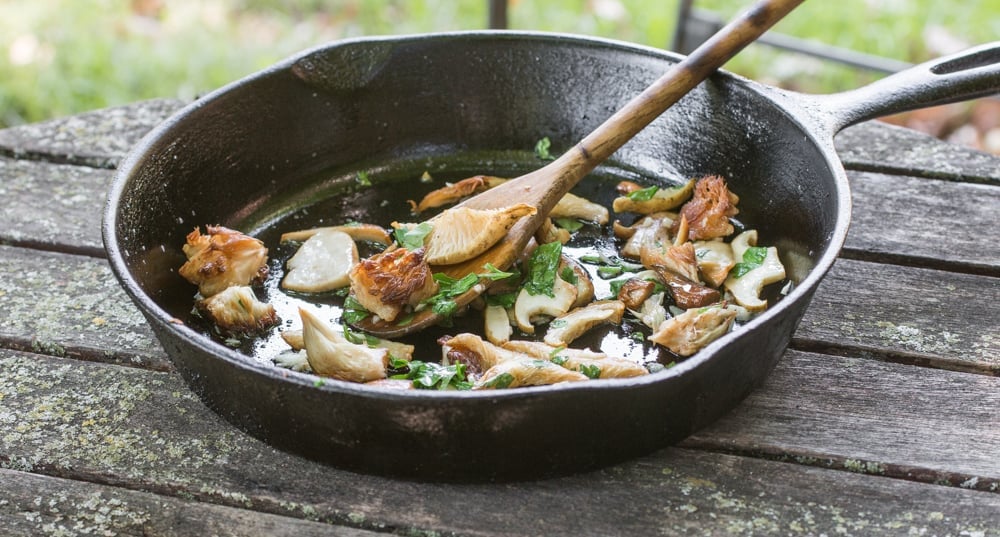
When we get into historical-type preparations, you start digging into minutia. Basically what that means is that what can technically make one traditional mushroom preparation differ from another could be the absence of just a single ingredient or two, or a slight variation in technique or timing.
The differences in the end can be slight, but they're worth mentioning since the end result can often be quite different. For example, both of the mushroom recipes I just mentioned are, at the end of the day a pile of sauteed wild mushrooms, but even though they're very, very similar, mushrooms with persillade is not mushrooms bordelaise, and vice-versa.
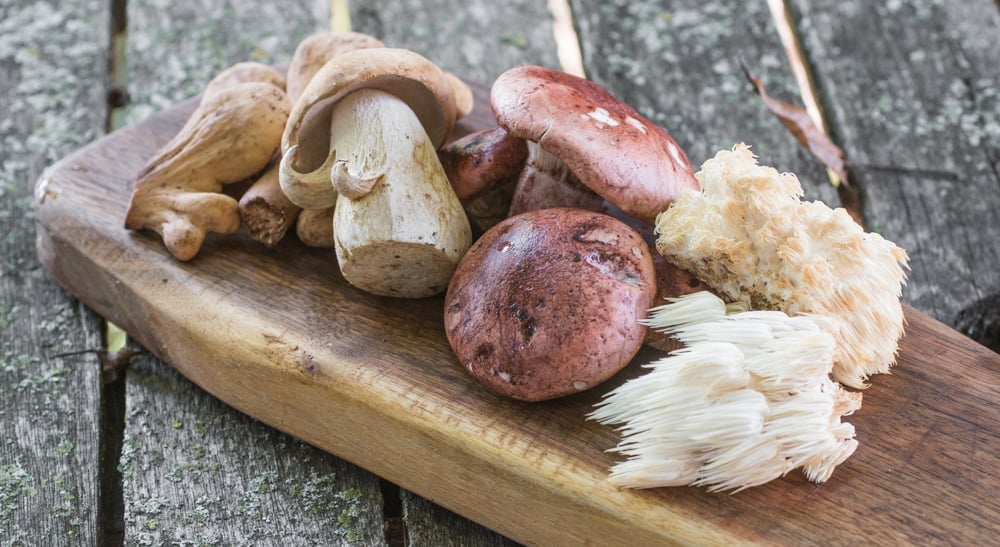
The differences here are simple and to complicate things, could vary slightly from person to person. From my research, and penchant for dismantling and picking apart cultural recipes, this is how I would describe the variation between these two classic mushroom recipes, similar to picking apart the differences between pesto and pistou.
Mushrooms persillade vs mushrooms bordelaise
- Wild mushrooms with persillade will have garlic, but not shallot or lemon juice, since shallot and lemon is not part of classic French persillade mixture (garlic and parsley)
- Wild mushrooms Bordelaise will have shallots and lemon juice, but not necessarily garlic.
- Some mushrooms Bordelaise with include breadcrumbs similar to my recipe here.
- Unlike mushrooms with persillade, I do see reference to animal fat here and there with this, duck fat being the obvious choice, but good pork lard would be great too. Using animal lard is optional here, but recommended.
These differences are slight, but different enough to really take note of, and separate out into different recipes here. Sometimes I'll combine the two as well, using garlic, shallots, parsley, and lemon, especially if I'm using a mushroom that needs help, like a lobster mushroom.
The finished product will only be as interesting as your blend of mushrooms
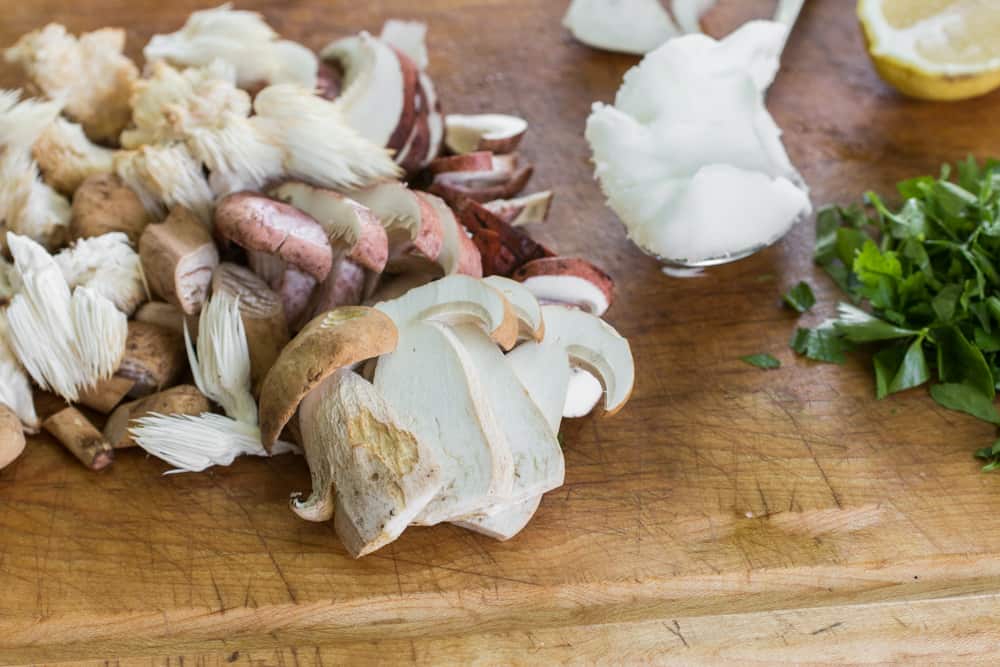
This is not a dish to make with mushrooms from the store. I mean, of course you can, and it won't taste bad, but this is meant to be a pure expression of celebrating a mushroom hunter's bounty, and the excitement that summer time rains can bring.
The bigger the variety you can pick, the more interesting the final dish will be. Obviously, only pick a variety of mushrooms you're 100% comfortable with, this is not the time for experimenting with a new species by tossing them in the mix.
French Wild Mushrooms Bordelaise
Equipment
- 1 10 inch saute pan
Ingredients
- 8 ounces mixed fresh wild mushrooms as large a variety as you're comfortable cooking
- Kosher salt to taste
- Fresh ground black pepper to taste
- 2 tablespoons finely chopped shallots
- 2 tablespoons duck fat or pork lard you can substitute your favorite cooking oil here too
- 1 teaspoon roughly chopped Italian parsley
- Juice of half a lemon make sure to pick the seeds out
Instructions
- Clean the mushrooms meticulously, rinsing and/or dipping in water and swishing if needed. Allow the mushrooms to drain on clean towels, with another towel on top if needed. From here the mushrooms can be prepared ahead of time and refrigerated in plastic bags, or just overnight in the towel to weep excess water, but only for 1 night.
- Before cooking, cut the mushrooms into similar shapes, trying to keep the individuality of each mushroom as much as you can. For example, most chanterelles should be cooked whole, and porcini in slices or quarters, chicken of the woods should be in hunks or slices.
- In a very large saute pan or cast iron skillet or two pans if you only have 10 inch saute pans, heat the oil until hot and shimmering.
- Add the mushrooms and cook until caramelized on medium-high heat Season to taste with salt and pepper, then add the butter, shallot and parsley and cook for 1 minute more, stirring to distribute the seasonings.
- Double check the seasoning for salt and adjust if needed, then remove the mushrooms from the pan with a slotted spoon to remove any excess fat, or allow them to dry on paper towels for a second, or just serve it on paper towels. Or, serve on toast and spoon all the glorious mushroomy duck fat on everything and pig out. Can you guess which way I would eat them?

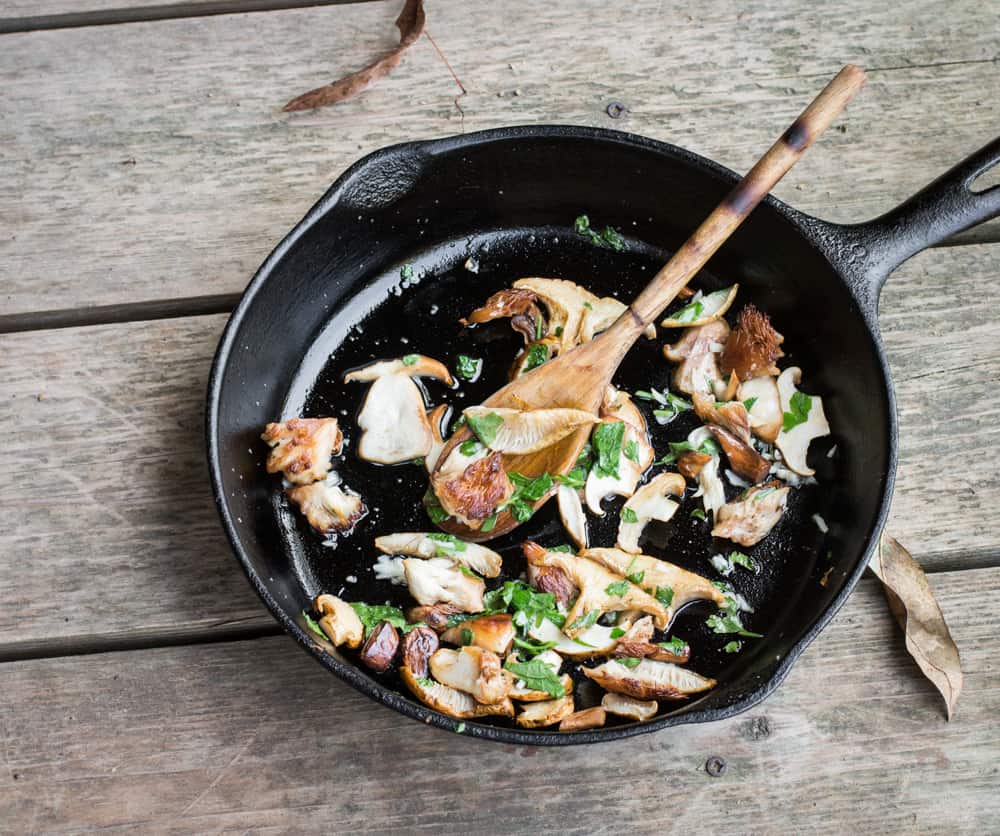
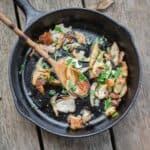
Leave a Reply